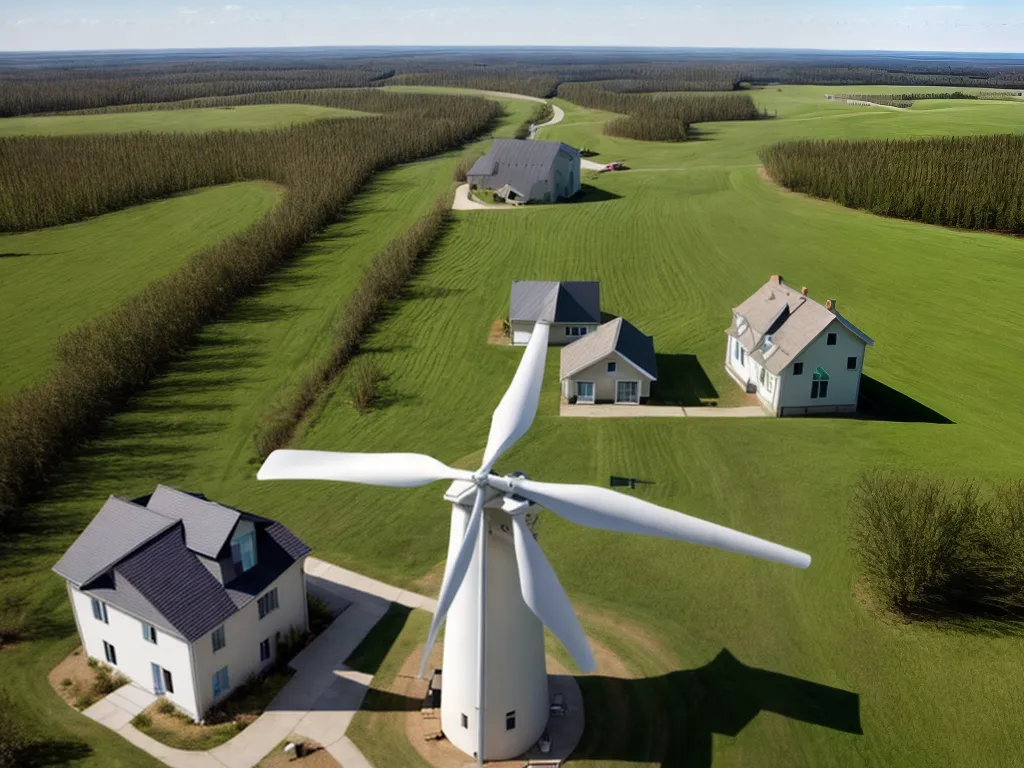
The Downsides of Small-Scale Residential Wind Turbines
Introduction
As someone interested in renewable energy, I installed a small-scale wind turbine on my property last year. I was eager to generate my own clean electricity and reduce my energy bills. However, over the past 12 months, I've learned that small wind turbines come with some significant downsides that homeowners should consider before installing one. In this article, I'll share the main downsides I've experienced with my small-scale residential wind turbine.
Upfront Costs
The first downside of small wind turbines is the high upfront cost. A grid-connected turbine suitable for a suburban home can cost $15,000 to $50,000 installed. This is a major investment for a homeowner. While incentives like tax credits can help defray the upfront cost, you'll likely wait years to recoup your investment through electricity savings.
The installation process can also add thousands more in costs. Since most homeowners hire contractors to install the turbine, fees for cranes, concrete, electrical work, permits, and labor apply. Before installing your turbine, get quotes from at least 3 contractors to understand the full upfront cost.
Ongoing Maintenance
Another downside is that small wind turbines require regular maintenance and repairs. There are many moving parts subject to wear and tear, including blades, generators, gearboxes, and bolts. The turbine's electronics, batteries, and inverter also need periodic maintenance and replacement.
I budget $500 per year for preventative maintenance on my 5 kW turbine. Even with maintenance, I've still faced $2,000 in unexpected turbine repairs over 3 years - mainly worn blade bearings and electrical faults. Be prepared for occasional high repair bills.
Noise
Residential wind turbines generate noise that can annoy you and your neighbors. The spinning blades create a whirring "swoosh" sound. The gearbox and generator add a mechanical humming noise. In total, a 10 kW turbine can produce 45 to 55 decibels of noise. This is similar to the background noise of an office.
The noise may not bother you, but it often annoys neighbors. Site your turbine as far as possible from other homes. Obtain legal easements if your neighbors' homes are within 300 feet. Inform new buyers if you eventually sell your home.
Birds and Bats
Spinning wind turbine blades can injure or kill birds and bats. Larger utility-scale wind farms take steps to minimize wildlife impacts. But individual homeowners rarely address this issue.
According to the American Bird Conservancy, house cats kill over 2 billion birds per year. So wind turbines are not the biggest threat. However, each turbine does pose some risk to birds and bats in the area. To minimize impacts, avoid sites used by migratory birds as flight paths or nesting spots.
Local Permitting
Getting the proper permits for a small wind turbine can be time consuming and frustrating. Rules vary greatly between counties and cities. Your turbine may need permits for the structure, electrical work, noise, and more.
I spent 4 months working with my county planning office to get approved. Some communities ban wind turbines outright due to noise concerns. Be prepared for a lengthy permitting process, costs for hearings, and possible rejection. Know the rules before investing in a turbine.
Output Depends on Wind
The final downside I've experienced is that the turbine's power production depends heavily on wind speed. Most small turbines require wind speeds of 8 to 15 mph to generate their rated power. At lower wind speeds, my energy output is far below the rated 5 kW.
To get a realistic idea of your turbine’s potential energy production, install a wind meter on your property for 6 months. Record the wind speeds to calculate the turbine’s estimated output. Don’t assume you’ll get the rated power production.
Conclusion
Installing a small wind turbine at home has allowed me to generate my own renewable electricity. However, significant downsides like upfront costs, noise, and permitting should give homeowners pause. To make the most informed decision, carefully research the costs, legal requirements, and likely energy output before moving forward. With realistic expectations, a residential wind turbine can be a good investment.